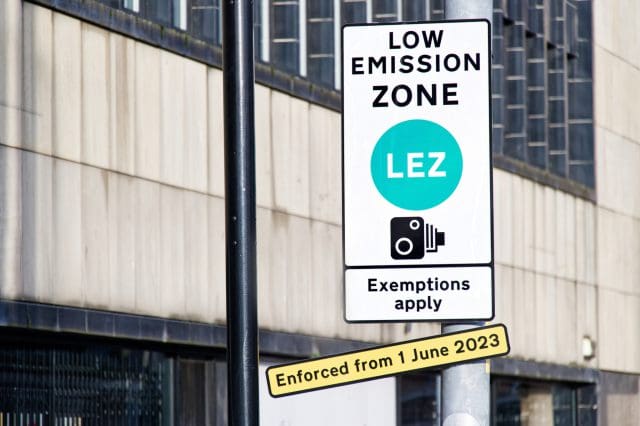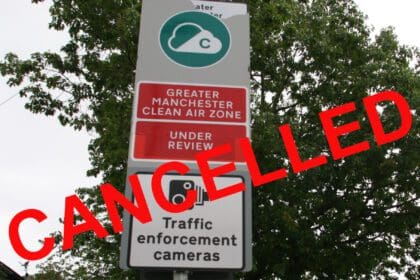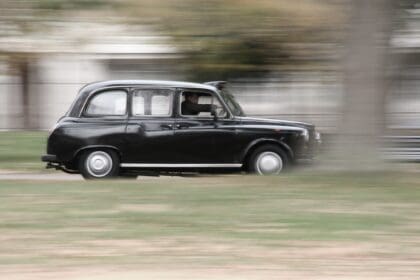Clean air and low emissions zones are expanding across the UK and taxi drivers whose vehicles don’t meet tougher environmental standards fear the daily charges could force them off the road.
As Glasgow city centre’s LEZ goes live next month, taxi drivers were worried that the £60 charge for older, non-compliant vehicles would stop them operating in the area.
As the June 1 deadline approaches, more than 250 of the city’s 1,391 public hire drivers have been able to apply to Glasgow City Council for temporary exemptions to the LEZ scheme. This will give them time to make the switch to Euro 6 diesel minimum standard – generally those registered after September, 2015. For petrol vehicles, it is a minimum Euro 4 standard, which is generally vehicles registered after 2006.
To be eligible for an exemption, public hire drivers with non-compliant cabs would have to prove that they are planning to retrofit their vehicles to reduce emissions, or are planning to replace their existing taxi with a greener one.
A council spokesman told STV News: “With the application process now open, no public hire taxi should be unable to continue operating in June as a result of the LEZ, with flexibility up until June, 2024, provided to support the transition to compliance.”
With delays and strict criteria for funding to replace more-polluting vehicles, unions were concerned that there would be too many hoops for taxi drivers to jump through before June 1.
But taxi drivers just need to show they have applied for a temporary exemption and that they either do not have access to a funded retrofit solution or have applied for, or submitted an expression of interest in, securing funding but are waiting for confirmation of funding/work beginning.
Unite Glasgow Cab Section said: “The key criterion we fought for was an exemption based on simply registering an interest in a retrofit solution. That does not mean that you have to have made an application to retrofit, just that you have shown an interest.”
To discourage people from taking the penalty charge on the chin, the level of fines doubles for each subsequent visit to the LEZ by a non-compliant vehicle, with fines capped at £480 for cars and light good vehicles and £960 for buses and HGVs.
The drive is to remove polluting vehicles from the city centre in a bid to cut pollution and improve health.
The council’s advice to taxi drivers and others planning to enter the city centre is: “Plan ahead and know the L-E-Z”. Signs will warn drivers that they are approaching the zone and enforcement cameras will be in operation.
Emergency services vehicles, motorcycles and blue badge holders are exempt from the LEZ charge. People who live withing the LEZ have also been given more time to replace polluting vehicles. More details are available at glasgow.gov.uk/lez
The move in Scotland comes as London’s ULEZ area is to widen later this year, with the RAC warning that it will leave 700,000 drivers in the capital facing a daily £12.50 charge. It predicts the expansion in August will have a massive financial impact on individuals as well as businesses including taxis who already face higher costs for fuel, maintenance and repairs, and taxi insurance.
RAC head of roads policy Nicholas Lyes said: “Changing to a compliant vehicle at such short notice simply won’t be something many will be able to afford, especially during a cost-of-living crisis and at a time when second-hand car prices are so high.”
But as news website Upday reports, many appear getting ahead of the curve, with Transport for London research claiming that nine out of 10 cars driving in outer London already meet the Ulez standards.
London mayor Sadiq Khan said the aim of the Ulez is to “get the most polluting vehicles off our roads in order to protect both the health of Londoners and our environment.
“It’s now just one in 10 cars seen driving in outer London that aren’t Ulez compliant – a fantastic result.
“For drivers of the very few non-compliant vehicles, I have launched the biggest scrappage scheme ever.”
Does your taxi meet clean air zone or low emissions zone standards?




